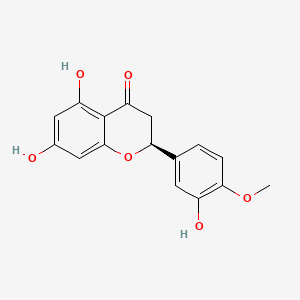
|
hesperetin |
Hesperetin is a lipid of Polyketides (PK) class. Hesperetin is associated with abnormalities such as Corn of toe, Ischemia, Osteoporosis, Consumption-archaic term for TB and Wiskott-Aldrich Syndrome. The involved functions are known as conjugation, inhibitors, Process, mRNA Expression and Adjudication. Hesperetin often locates in Entire intestinal epithelium, Protoplasm, Membrane, Shoulder and Back. The associated genes with Hesperetin are ABCG2 gene, ABCC2 gene, FATE1 gene, ABCB1 gene and P-glycoprotein 2. |
801 |
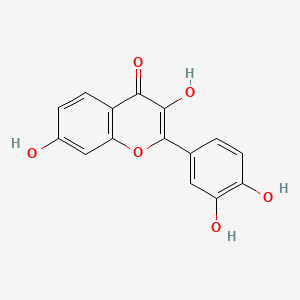
|
Fisetin |
Fisetin is a lipid of Polyketides (PK) class. Fisetin is associated with abnormalities such as Morphologically altered structure, PARKINSON DISEASE, LATE-ONSET, Tetanus, CNS disorder and Disintegration (morphologic abnormality). The involved functions are known as Autophagy, Apoptosis, Energy Metabolism, Acceleration and Anabolism. Fisetin often locates in Mitochondria, Cytoplasmic matrix, Extracellular, Cytoskeletal Filaments and Autophagic vacuole. The associated genes with Fisetin are SIRT1 gene, MAP1LC3A gene, TP53 gene, P4HTM gene and AURKB gene. The related lipids are Phosphatidylserines and Lipopolysaccharides. The related experimental models are Animal Cancer Model, Xenograft Model, Mouse Model, Cancer Model and Disease model. |
832 |
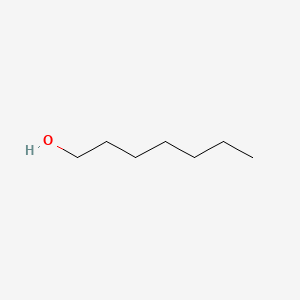
|
n-heptanol |
N-heptanol is a lipid of Fatty Acyls (FA) class. N-heptanol is associated with abnormalities such as Corneal Neovascularization. N-heptanol often locates in Epithelium and Structure of corneal epithelium. The related lipids are Heptanol. |
984 |
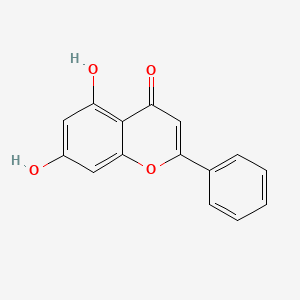
|
chrysin |
chrysin is a lipid of Polyketides (PK) class. Chrysin is associated with abnormalities such as Unconjugated hyperbilirubinemia, Metabolic Diseases, Hypogonadism, Renal tubular disorder and Colitis. The involved functions are known as Hypoxia, enzyme activity, Oxidation, inhibitors and Cell Survival. Chrysin often locates in Protoplasm, Plasma membrane, Back, Extracellular and Mitochondria. The associated genes with chrysin are CFB gene, P4HTM gene, UGT1A9 gene, CYP1A1 gene and UGT1A1 gene. The related lipids are Promega, estradiol-3-glucuronide, Steroids and Lipopolysaccharides. The related experimental models are Mouse Model. |
1085 |
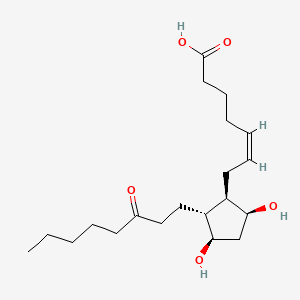
|
13,14-dihydro-15-keto-PGF2alpha |
13,14-dihydro-15-keto-pgf2alpha is a lipid of Fatty Acyls (FA) class. |
1147 |
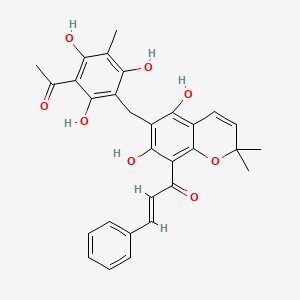
|
rottlerin |
Rottlerin is a lipid of Polyketides (PK) class. Rottlerin is associated with abnormalities such as PARAGANGLIOMAS 2, Hyperostosis, Diffuse Idiopathic Skeletal, Virus Diseases, Perisylvian syndrome and Autoimmune disease (systemic) NOS. The involved functions are known as Apoptosis, Regulation, Signal Transduction, inhibitors and Proteasome Inhibitors [MoA]. Rottlerin often locates in Clone, Membrane, Body tissue, Plasma membrane and soluble. The associated genes with Rottlerin are XIAP gene, GAPDH gene, ICAM1 gene, P4HTM gene and TNFSF10 gene. The related lipids are Promega, Fatty Acids, Sphingolipids, Lipopolysaccharides and Saponin. The related experimental models are Mouse Model, Xenograft Model and Cancer Model. |
1198 |
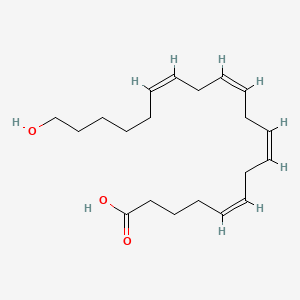
|
20-HETE |
20-hete is a lipid of Fatty Acyls (FA) class. 20-hete is associated with abnormalities such as Cyst, Kidney Diseases, Kidney Failure, Chronic, Cystic Kidney Diseases and Simple renal cyst. The involved functions are known as Phosphorylation, inhibitors, Hypertrophy, Epithelial Cell Proliferation and Anabolism. 20-hete often locates in Mouse Kidney, Microsomes, Tissue membrane, Body tissue and Cytoplasmic matrix. The associated genes with 20-HETE are CYP4F3 gene, PKHD1 gene, Transgenes, P4HTM gene and CYP2E1 gene. The related lipids are Promega, enterodiol, Fatty Acids, hexanoic acid and U 73343. The related experimental models are Mouse Model, Knock-out, Streptozotocin Diabetes, Transgenic Model and Rodent Model. |
1257 |

|
SCHEMBL105486 |
Kakonein is a lipid of Polyketides (PK) class. Kakonein is associated with abnormalities such as Fatty Liver, Chronic liver disease, Morphologically altered structure, Hypertensive disease and Cardiovascular Diseases. The involved functions are known as protein expression, Extravasation, Liver damage, mRNA Expression and cell activation. Kakonein often locates in Body tissue, Hepatic, Microvilli, Cytoplasm and Membrane. The associated genes with Kakonein are TJP1 gene, CD14 gene, iberiotoxin, AT-Rich Interactive Domain-Containing Protein 1A and NKS1 gene. The related lipids are dehydrosoyasaponin I and Steroids. The related experimental models are Knock-out. |
1391 |
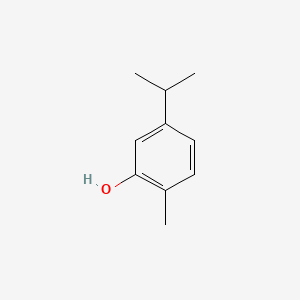
|
Carvacrol |
Carvacrol is a lipid of Prenol Lipids (PR) class. Carvacrol is associated with abnormalities such as Consumption-archaic term for TB, Disintegration (morphologic abnormality), Infection, Corn of toe and Candidiasis of vagina. The involved functions are known as Stereochemistry, Anabolism, Oxidation, Process and Binding (Molecular Function). Carvacrol often locates in Skin, Nerve Tissue, Membrane, Endothelium and Plasma membrane. The associated genes with Carvacrol are P4HTM gene, TRPV3 gene, TRPV1 gene, TRPV2 gene and TRPV4 gene. The related lipids are Fatty Acids, Lipopolysaccharides, Octanols, Micelles and butyrate. |
1535 |
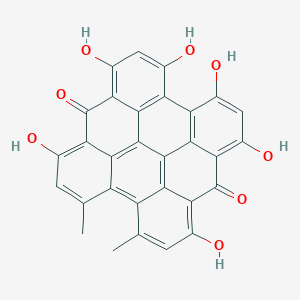
|
hypericin |
hypericin is a lipid of Polyketides (PK) class. Hypericin is associated with abnormalities such as Dermatitis, Phototoxic, Dehydration, Photosensitization, Morphologically altered structure and Myocardial Infarction. The involved functions are known as Cell Cycle Checkpoints, Apoptosis, Acetylation, Cell Survival and Caspase Activation. Hypericin often locates in insoluble fraction, Cytoplasmic matrix, Protoplasm, Tissue membrane and Cytoplasm. The associated genes with hypericin are CDC37 gene, HSPA8 gene, RAF1 gene, cyclin H and FK228. The related lipids are Phosphatidylserines. |
1752 |









